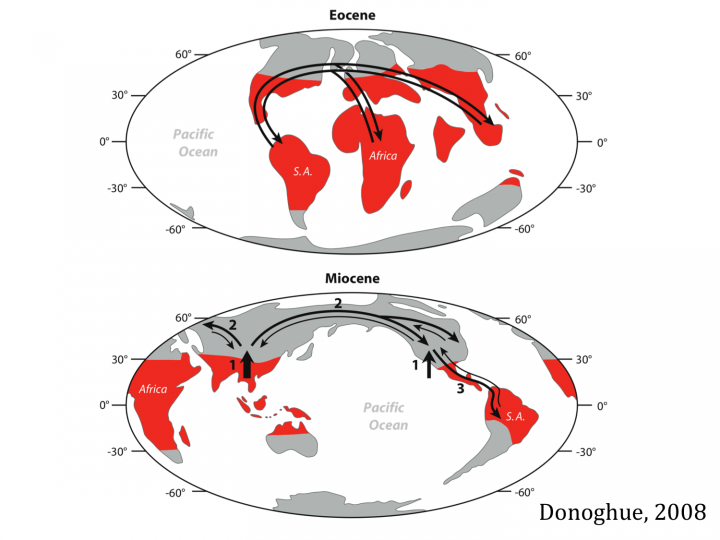We continue to develop the idea that the nature and the rate of evolutionary transitions between different biomes has had important consequences for global patterns of plant diversity (e.g., the latitudinal species richness gradient). The key underlying concept is “accessibility,” where this applies to the relative evolutionary ease of making major physiological shifts, but also to the adjacency of different environments through time. An immediate goal is a phylogenetic synthesis of biome transition data across seed plants.

Donoghue, M. J. 2008. A phylogenetic perspective on the distribution of plant diversity. Proceedings of the National Academy of Sciences USA 105 (Suppl. 1): 11549-55.
Edwards, E. J. and M. J. Donoghue. 2013. Is it easy to move and easy to evolve? Evolutionary accessibility and adaptation. Journal of Experimental Botany 64(13): 4047–52.
Smith, S. A. and M. J. Donoghue. 2010. Combining historical biogeography with niche modeling in the Caprifolium clade of Lonicera (Caprifoliaceae, Dipsacales). Systematic Biology 59: 322-41.
Wiens, J. J. and M. J. Donoghue. 2004. Historical biogeography, ecology, and species richness. Trends in Ecology & Evolution 19: 639-44.